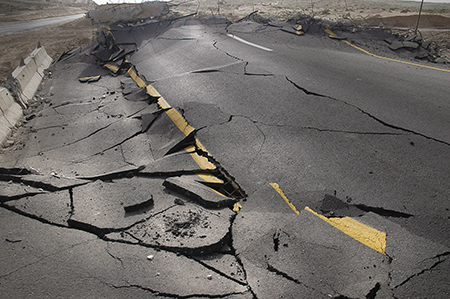Research at the University of Liverpool has found that the magnitude of earthquakes is a result of trapped water under pressure (or fluid pressure) in the fault plane between two tectonic plates.
Researchers from the University of Liverpool and the German Research Centre for Geosciences re-analyzed data recorded prior to the Chile earthquake of 2010, the sixth largest earthquake recorded, using novel high-resolution 3-D seismic imaging techniques, GPS observations and detailed numerical modeling.
They were able to demonstrate for the first time that fluid pressure along the fault line directly correlates with areas of locking between the two tectonic plates.
Large earthquakes, like the 8.8 magnitude event in Chile, occur where tectonic plates collide and one plate is moving under the other.
Andreas Rietbrock, Professor of Geophysics, from the University’s School of Environmental Sciences, said: “It has long been one of the main challenges of geoscientists to decipher the physical nature of plate locking in more detail and to find out if this relates to the magnitude of earthquakes.”
Studies of recent large earthquakes in Sumatra, Chile and Japan have shown that the build-up of stress along the plates influences the extent of the rupture along the fault planes, the magnitude of the earthquake and the possibility to generate destructive tsunamis.
Professor Rietbrock added: “We found that high pore fluid pressures in the fault plane lead to lower coupling between the two tectonic plates. The increase in pore fluid pressure might be caused by subduction of a fracture zone, which provides substantial fluid volumes that become trapped along the plate interface.“
“This research provides a new powerful tool to monitor the fluid pressure which could be used to predict possible earthquake activities.”
The research is published in Nature Geoscience.
To find out more about studying Geophysics click here
